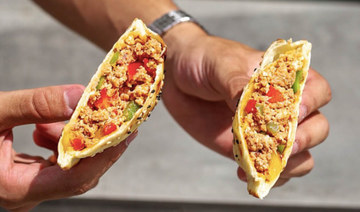LONDON: From cocoa to tea, food and drink giants are setting their own standards for ethical sourcing of raw materials, moving away from third-party labels such as Fairtrade.
Mondelez International, owner of chocolate brands Cadbury and Toblerone, Unilever, behind tea brands such as Lipton and PG Tips, and Barry Callebaut, the world’s biggest producer of chocolate and cocoa products, have all introduced their own schemes.
They say their targets are more comprehensive and some claim their schemes are more effective in tracking whether a product is ethically sourced every step of the way. With companies under financial pressure, analysts say it has also been a way to save money.
But critics are worried that the standards that third-party groups such as UTZ Certified or Rainforest Alliance have fought to establish risk being muddled and what is deemed ethical and sustainable could become more ambiguous.
“Standards measuring environmental and social issues need to be transparent because, once this process happens behind closed doors, it is difficult to see how companies and farms apply them,” said Sloane Hamilton, labor rights policy adviser at Oxfam, a charity focused on alleviating poverty.
“We don’t want to see standards watered down, and neither do we want customers to be faced by a bewildering proliferation of different certification schemes.”
Third-party certifiers are not opposed to all self-certification, even though the loss of fees could threaten their future. Rather, they are worried standards could become meaningless if too many companies set their own criteria.
Mondelez started selling the first Green & Black’s chocolate in the UK without a Fairtrade logo in August, more than 23 years after the brand’s Maya Gold bar received Britain’s first mark.
The bar instead carries the stamp of “Cocoa Life,” a Mondelez scheme started in 2012 with broad goals including improved productivity, protection of fertile land and gender equality in farming communities.
Mondelez says Fairtrade is still an “implementing partner” and the group’s auditing arm is used to vet cocoa sourced through “Cocoa Life.”
Fairtrade, a non profit, aims to push for a better deal for farmers and workers in developing nations. It sets standards, including a minimum price for raw materials, and requires companies to contribute toward businesses or community projects, in exchange for the Fairtrade stamp.
But as the concept of ethically-sourced ingredients has become better understood by consumers, brands have started adopting standards that work for their business and image.
“It’s opened the door for companies to say ‘well let’s develop a standard that suits our business and also has the impact that we want to have on the ground,” said Alan Rownan, ethical labels analyst at Euromonitor.
Crafting in-house standards has also become a way to trim costs for big companies under financial pressure as economic growth slows and consumers opt for healthier snacks or smaller, more artisan brands.
“When the whole market is certified, the ability to have a higher price for it becomes less,” said Jon Cox, analyst at Kepler Cheuvreux in Zurich, who follows companies such as Nestle and Barry Callebaut.
“So why not bring it in-house anyway and save money? And if they can convince consumers that it’s as good as some of the independents, if not better, then that maybe helps them as well.”
DEEPER INVOLVEMENT
While third-party labels have had a leading role in the drive to stamp out practices such as deforestation and child labor on farms, they have also faced criticism.
Think-tanks and industry groups say the way they enforce standards is not transparent enough and they have failed to align their programs to reduce complexity. Rainforest Alliance and UTZ Certified are now expected to streamline their standards after recently announcing plans to merge.
With consumer awareness growing, companies are also seeking to track more closely the sourcing of their ingredients and show the impact of certification to their consumers.
Fairtrade ensures that the sourcing of raw materials including coffee and bananas can be traced at every step of farming and processing but it does not provide the same guarantee for cocoa and tea.
It says certified cocoa beans are difficult to track as they can get mixed with conventional beans at the processing stage in countries that do not have the capacity to keep them separate.
This means a Fairtrade chocolate bar may be made with certified and conventional cocoa, with the label only guaranteeing that the company buys a percentage of Fairtrade beans and that any premium paid goes to farmers certified by the organization.
Some food and drinks companies say, as part of their move to new standards, they are taking a more active role in sourcing to show consumers a clearer link.
For example, Barry Callebaut built a dedicated ethically-sourced cocoa butter tank in a factory in Belgium and it has launched a mobile app aimed at improving traceability on farms in the Ivory Coast.
Mondelez does not track cocoa through the entire supply chain, but it says Cocoa Life has allowed for a deeper involvement with farmers. The company uses digital mapping in Ghana, Ivory Coast and Indonesia to boost transparency and traceability from farm to processing facility.
“When you’re simply a buyer of raw materials, then in a typical supply chain, you’re not involved directly on the ground,” said Jonathan Horrell, global director of sustainability for Mondelez.
Some companies have also set deadlines for eliminating unsustainable practices from their supply chain and, as they approach, the pressure to find solutions has intensified.
Unilever has promised to source 100 percent of its materials sustainably by 2020 using both certification and its own “Unilever Sustainable Agriculture Code.”
Barry Callebaut is also aiming to source 100 percent of its ingredients sustainably by 2025, up from 23 percent in 2015. It buys cocoa through external schemes and its own “Cocoa Horizons” program.
“They’re under pressure to reach these (goals),” Rownan said. “And it’s not always easy to reach 100 percent targets following these mainstream, rigid certifications.”
SAVVY CONSUMERS
While critics of self-certification worry about muddling standards, consumers are growing savvier. The companies say they risk a fierce backlash if they try to loosen the rules.
“If you connect your name to it...then you want to make sure what you’re putting out there is absolutely credible,” said Christiaan Prins, head of external affairs for Barry Callebaut. “The consumer nowadays can no longer be tricked in any sense.”
Sainsbury’s angered consumers and watchdogs in June when it replaced the Fairtrade mark on its own-brand tea with its pilot “Fairly Traded” version, with an eye to possibly extending it to other products such as coffee and bananas.
Under “Fairly Traded,” farmers will get “above and beyond” what they were receiving from Fairtrade and it should help make them more resilient to climate change, said Sainsbury’s head of media relations David Nieberg.
But critics say the scheme takes control away from farmer organizations, who will no longer directly receive a premium for their tea. The premium will be managed by the Sainsbury’s Foundation and will be used to fund farmers’ strategic projects.
Sainsbury’s will not pay licensing fees to Fairtrade but will continue to buy tea from farmers certified by the group. It will also purchase from farmers vetted by other groups if it decides they meet its in-house rules for ethical sourcing, Nieberg said.
Consumer scrutiny is likely to be even greater toward companies using self-made schemes to meet ambitious targets for “sustainable” sourcing — a label that is already ambiguous because it has many standards and meanings.
“When companies move away from certifiers and all of a sudden are able to far more easily achieve their sustainability goals – well what’s changed?” said Rownan. “I think consumers will want to know.”
With questions about their future, third-party certifiers are trying to adapt to the potential dent to licensing fees, which made up 11 million euros ($13.04 million) or 63 percent of Fairtrade International’s income in 2015.
“We’re trying to show them the stories behind the investment,” said Dario Soto Abril, chief executive officer at Fairtrade International. “We’re making a big effort to listen to companies and adapt and innovate within our model.”
Fairtrade also hopes to expand through new partnerships with groups such as Lidl and Aldi, said Abril. Fairtrade’s auditing arm, FLOCERT, also launched an online platform called Fairtrace, to make it easier to track products through the supply chain. ($1 = 0.8434 euros)
How fair is our food? Big companies take reins on sourcing schemes
How fair is our food? Big companies take reins on sourcing schemes
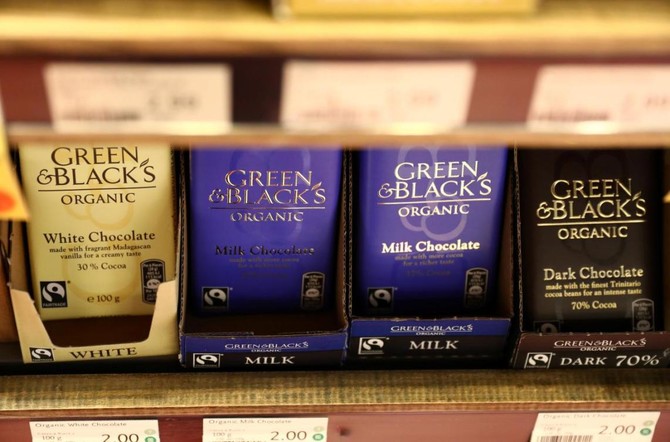
Where We Are Going Today: Amm Shaltat
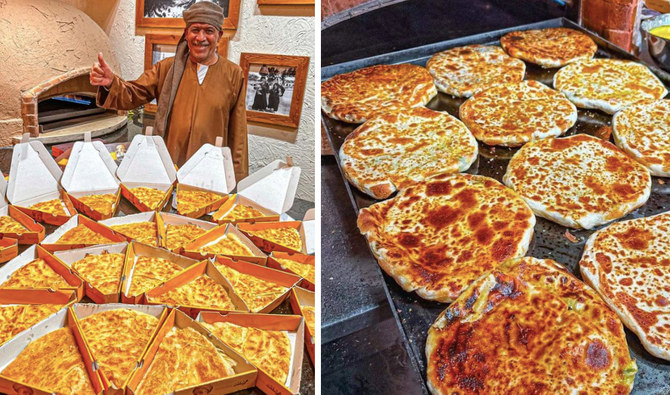
If you are a fan of Egyptian pastries, particularly Mushaltat, then look no further than Amm Shaltat, which translates to Master of Mushaltat, for their specialization in this delectable pie.
Amm Shaltat have garnered great success since opening their first branch in Riyadh. Now with a new location on Palestine Street in Jeddah, they bring their authentic flavors closer to home.
The dish is made by layering thinly rolled dough with fresh ghee, which is then folded multiple times to create a flaky, multi-layered structure reminiscent of puff pastry. Before baking, it is brushed with ghee or butter to achieve a golden brown, crispy crust.
The traditional rural Egyptian Mushaltat pie is a beloved savory pastry known for a flavorful mixture of minced meat, sausage, mixed cheeses, vegetables and many other fillings.
Mushaltat is enjoyed as a snack, breakfast, or main dish in Egypt. It is believed to be a great source of energy because it is high in calories. Some enjoy it plain with honey and feta cheese, while others prefer sweet variations filled with cream or chocolate and topped with powdered sugar.
Many visitors indulge in the sweet Mushaltat pie which feels like being transported to the bustling streets of downtown Cairo. The sausage pies deliver the same perfect taste.
However, the restaurant should perhaps consider looking at operational efficiencies. There are seemingly too few ovens and an inadequate ordering system, which has resulted in long queues and many dissatisfied customers.
For more information, visit their Instagram page @3m.shaltat.
Recipes for success: Chef John Mark offers advice and a salmon batayaki recipe
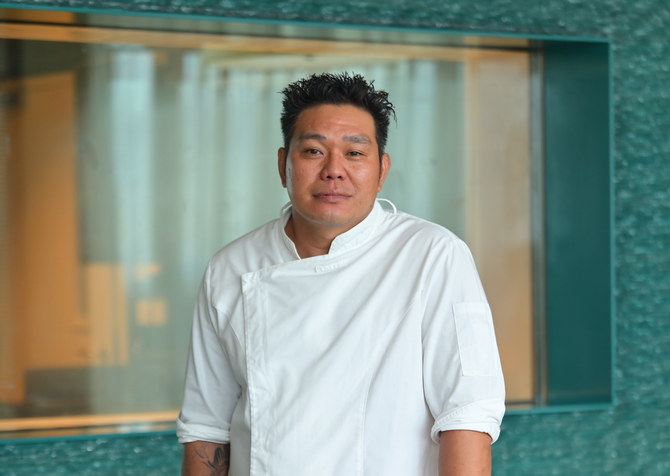
DUBAI: Chef John Mark has worked at a number of prestigious establishments over the years, in the Maldives, Mauritius, the UAE, and India, among others. Now, he’s the chef de cuisine at Japanese restaurant Gishiki 45 in The St. Regis Red Sea Resort.
Here, Mark discusses embracing mistakes, his favorite dish to make, and the importance of a healthy working environment.
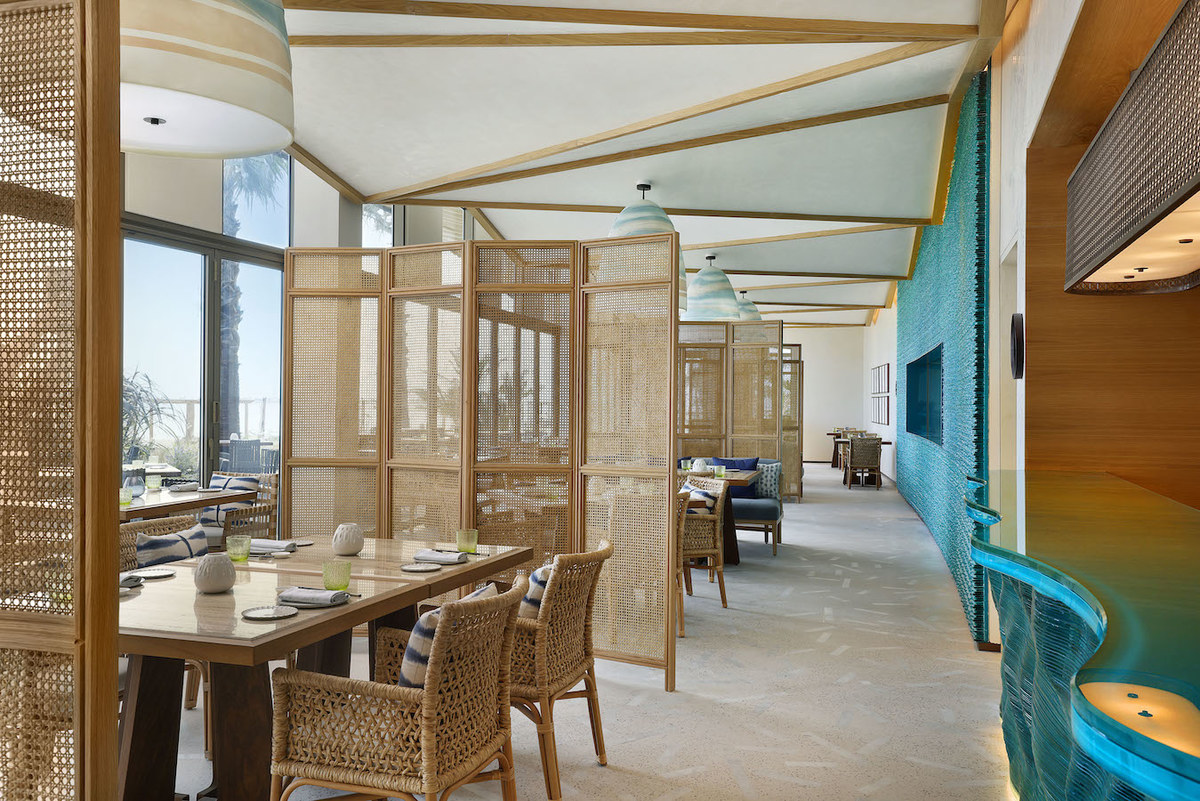
What one ingredient can instantly improve any dish?
I love the smell of garlic and the smell of onion. These two ingredients are very important in Asian cuisine; they give the dishes a nice aroma and flavor, and can enhance any dish.
When you go out to eat, do you find yourself critiquing the food?
I’m not one to criticize any chef or restaurant unless there are mistakes in the dish that I ordered. I respect chefs. I respect people who are working in the hospitality. And if I do need to say something, I make sure to say it in the right manner.
What’s the most common mistake that you find in other restaurants?
That the service team and the kitchen are at war. This is the chef’s responsibility. We need to make sure that the service team and the kitchen are one. It’s so important, because, as chefs, we cook, but the service team deal with the guests. The only thing that we want is to make the guests happy. So we need to be a team.
What’s your favorite cuisine?
Thai food. I love coconut flavors and Thai food has coconut in almost all the dishes. The flavors and the smell are rich. It makes me happy.
What’s your go-to dish if you have to cook something quickly at home?
My daughter loves to eat. I let my family try different cuisines, but she really loves pasta. So, I cook pasta for my daughter — and for my wife of course. We also have a famous dish in the Philippines called chicken adobo, and when I am home I like to cook that for my family.
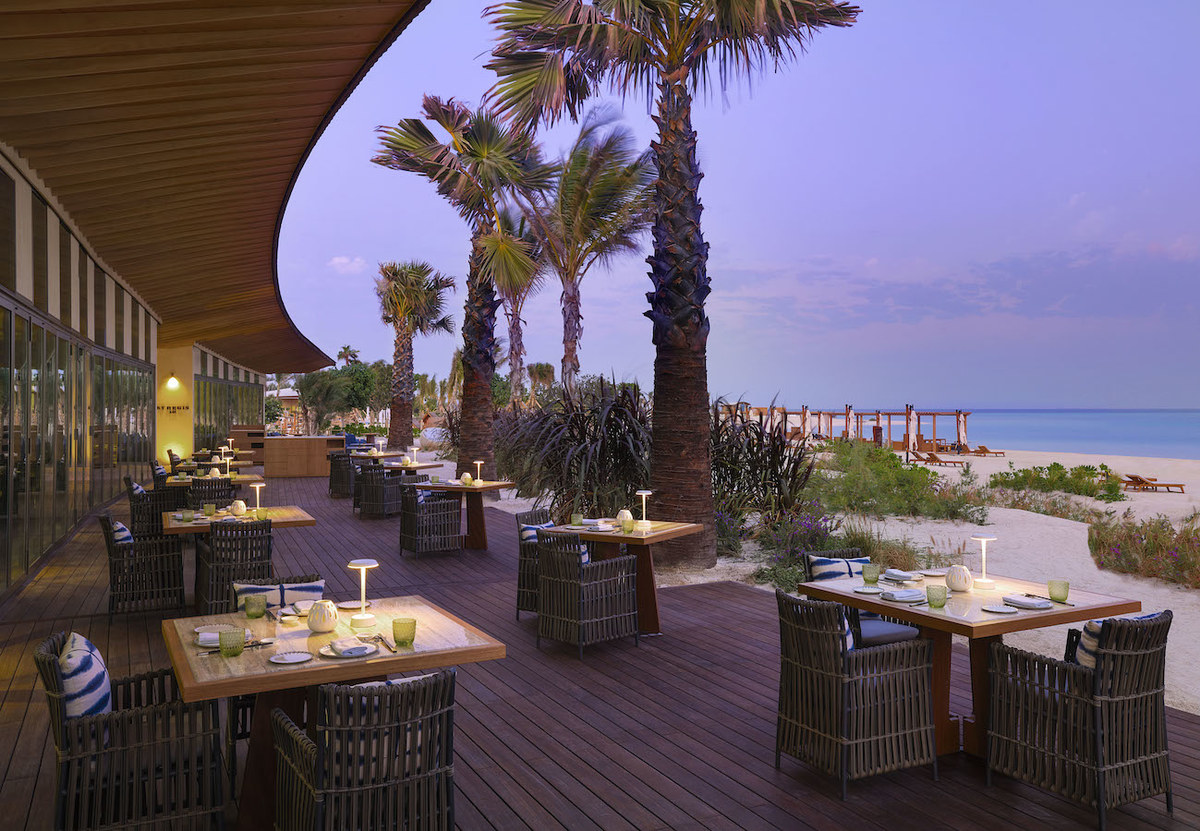
What customer request most annoys you?
You cannot be annoyed at your guests as a chef. You need to be flexible. We are here, in this world, to learn, and this is a huge opportunity. I can’t just focus on one thing like a horse; I have to keep an open mind. Why not try what they ask for, if this is what they want?
What’s your favorite dish to cook and why?
It’s something we’re famous for in the Philippines. It’s very authentic, you only really see it in the villages. It’s called beggar’s chicken. It’s so delicate. It’s a long process. You need to marinate the chicken and stuff it, then you wrap it in banana leaf. Then, you put mud on it. You cook it in the mud. So, when its cooked, you need to break the mud and open it. It smells amazing.
As a head chef, what are you like?
When I started as a chef, there was a lot of tension and a lot of shouting, but I don’t think this is a good environment. I don’t want it to be quiet in my kitchen, but I don’t want tension. Of course, I can be a little strict, but I don’t want anyone to shout at my staff. I have to talk to them nicely. Shouting is not on my menu.
Chef Mark’s Salmon Batayaki recipe
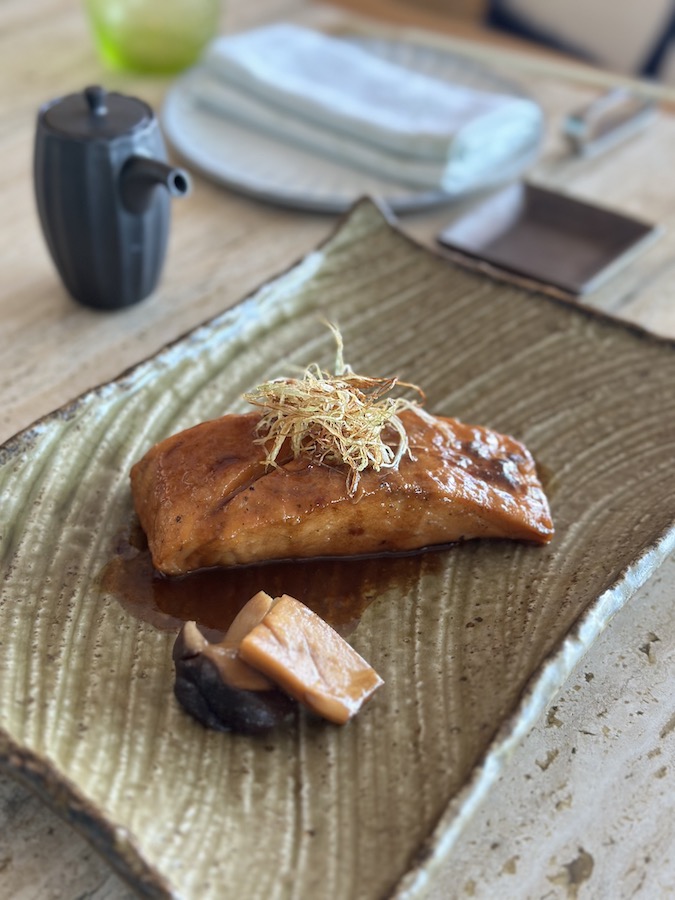
INGREDIENTS:
160g salmon; 1 oyster mushroom
For the dashi water:
Mix 100ml water; 5g konbu; 2g katsuobushi
For the batayaki sauce:
Mix 2 spoons soy sauce; 20g butter; 50ml dashi water; 1 spoon yuzu juice
INSTRUCTIONS:
1. Season the salmon with salt and pepper and dust with corn flour.
2. Heat fryer to 180 celsius and fry the salmon for 2 minutes.
3. Prepare a heated non-stick pan. Heat your batayaki sauce.
4. Put your salmon and mushroom in the batayaki sauce and simmer until the sauce becomes shiny and has a buttery texture.
5. Garnish with crispy leek and serve.
Chef Igor Macchia talks Italian-infused creations, collaboration with Riyadh’s new Lavazza Coffee Design eatery
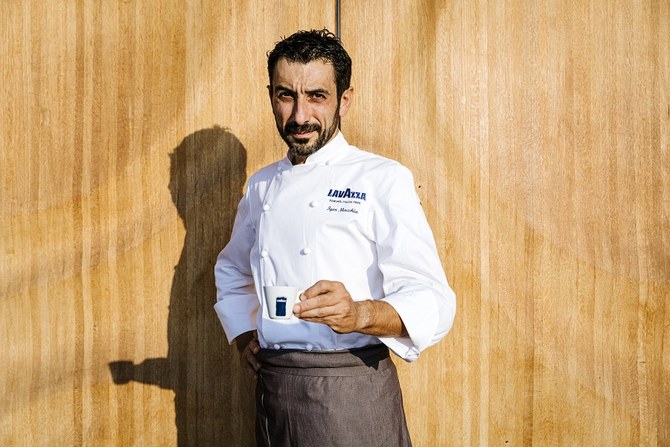
DUBAI: Italian chef Igor Macchia is excited about the opening in Riyadh of Lavazza Coffee Design, which infuses his signature dishes and brews with Middle Eastern tastes and flavors.
Having designed the menu for the establishment, which opened on May 23, Macchia is looking forward to Saudi Arabia customers experiencing his creations.

“The creative process started from a local consumer taste perspective combined with the Lavazza Italian DNA and my Michelin-star background from La Credenza Restaurant (San Maurizio Canavese, Torino, Italy),” said Macchia in an interview with Arab News.

“I’ve visited different restaurants and spots in Middle East and tasted a lot of local recipes to get inspiration for my project for Lavazza Coffee Design store. The result is a rich and tasty menu, ranging from breakfast to dinner, ideal to be paired with 1895 premium coffee, selected by Lavazza for this store in Riyadh.”
Inspired by Lavazza’s flagship stores in London and Milan, the Riyadh location boasts signature design elements, such as the iconic chandelier made up of more than 300 illuminated coffee beans and the main counter finished with exhausted coffee powder and resin for an original effect.
Additionally, the coffee experience is elevated by the introduction of Lavazza’s premium 1895 collection sourced from around the world. It consists of limited-quantity microlot coffee, specialty blends and single-origin brews.
During the interview, Macchia spoke about his favorite dish, early mistakes and management style.
When you started out as a professional, what was the most common mistake you made when preparing/cooking a dish?
I’ve never done a mistake — joking. I think the most common mistake was to enrich a lot a recipe looking for the best taste while, at the end, it’s sufficient to start by buying good quality ingredients and just treat ingredients by giving value to them for a wow effect.
What’s your top tip for amateur chefs, cooking at home?
Cooking is all about passion. Recipes are good to start with, but they need a personal touch, to become real wonderful dish.
What one ingredient can instantly improve any dish?
Parmesan cheese in all kinds of forms: wrapped, chopped, etc.
When you go out to eat, do you find yourself critiquing the food? What’s the most common mistake/issue that you find in other restaurants?
When I go out for dinner, it is a moment of pure pleasure and I love enjoying it without any fussing or critiquing. I personally like restaurants where clients’ satisfaction is at the center of the experience. The most common mistake is building up a very beautiful venue but with no soul in it. The vibe you can feel inside your preferred spot will make the difference.
When you go out to eat, what’s your favorite cuisine/dish to order? And why?
It all depends on the mood: it can be a traditional place like an Italian trattoria as well as a fine-dining restaurant or ethnic food which I do love.
What’s your go-to dish if you have to cook something quickly at home?
Easy and fancy at the same time: rigatoni with butter and Parmigiano Reggiano cheese, finished with a pinch of Lavazza ground coffee powder.
What request/behavior by customers most annoys you?
Clients are our everyday guests: we need to listen to their requests. Maybe one suggestion coming from a client, one day it will be a new dish on the menu.
What’s your favorite dish to cook and why?
The risotto, no doubt about it. I spent my summer childhood in the Vercelli area, where the Piedmont rice comes from. The risotto has a special place in my heart.
What’s the most difficult dish for you to get right, whether on your current menu or not?
I think the “Tiramisu by Lavazza” — the iconic Italian coffee-based dessert — should be the one. The sponge cake, instead of the lady fingers biscuits, needs to be prepared in the right way to be light and airy. Then you finish the dish with mascarpone foam with syphon and pour with the 1895 Cocoa Reloaded espresso on top. Different steps and texture for an amazing result.
As a head chef, what are you like? Are you a disciplinarian? Do you shout a lot? Or are you more laid back?
I’m personally a disciplinarian but I’ve learned, during my career, that the team motivation is key to reach great results. No need to shout, jst need to build a team spirit.
Recipe: MASCARPONE & DRIED FRUITS TOAST

Start by selecting a sour dough bread, cut 1 cm slice and gently toast it.
Spread generously with mascarpone cheese, add pomegranate seeds, decorate with fresh mint leaves and finish with a sweet sauce made with honey and chopped dried fruits like dates, pistachio and nuts. Serve it to your guests for a fresh and tasty breakfast. Ideal to be paired with your preferred coffee.
Where We Are Going Today: Casa Noor
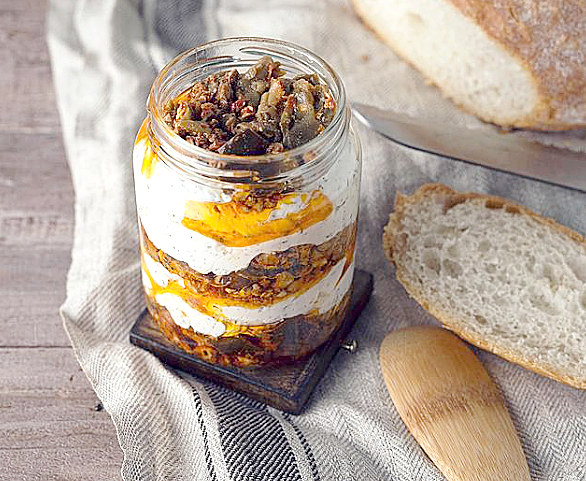
When Noora Ahmed Almubsher decided to start a home-based business, she went all in. In 2021, armed with a degree in business, she used her passion for food to fill in the gaps she found in the market. She wanted to create something innovative that reminded her of home, and thus named her entrepreneurial pursuit “Casa Noor.”
While the word “casa” translates to “home” in Spanish, a place which generates comfort, warmth and deliciousness, her products and “noor” or “light” in Arabic, are very Saudi-centric.
Based in the historic Tarout Island in Qatif in the Eastern Province, she handpicks ingredients from local farms while sprinkling in what she calls the “Noora” touch.
Her purple-hued Saudi-made sauerkraut will perk up any boring dish, offering a perky pickled pick-me-up that is both healthy for your gut and fun for your taste buds. I added it to the middle of a grilled cheese sandwich, the oozing melted sharp cheddar merged well with the sauerkraut bits that offered a fresh, tangy bite to the crunchy toast.
We also tried her pickled loumi lemons in a jar, an essential staple in Qatif. Those lemon-lime bits of citrus goodness have a distinctive taste as it requires very high temperatures and humidity to generate that signature Sharqiya flavor. They are perfect for chicken marinates, to scoop up into rice, or drizzle into tart desserts.
For the Noora Tea blend, which was curated specifically to celebrate Founding Day, Almubsher brought in ingredients from different parts of the Kingdom and combined them into one mix. She joked that it was extra personal since it shares her first name, but it is also a loving tribute to the late Princess Nourah bint Abdulrahman, whose name is proudly displayed at the front of the world’s largest woman-only university in Riyadh.
“Our goal is to demonstrate that Saudi Arabia has the capacity to produce world-class products that reflect our rich agricultural heritage,” she told Arab News. “These products are not only healthy and free from preservatives and hydrogenated oils, but they also taste good.”
“We want to convey to the world — and to our own community — that we have the resources and expertise to offer clean, sustainable, and locally-sourced food options that are accessible to everyone. This aligns perfectly with the broader objectives of Vision 2030, which aims to diversify the economy and promote local industries,” she said.
For more details and to order, visit her Instagram @casa.noor.
Where We Are Going Today: ‘Modawar’ cafeteria in Jeddah

- Modawar keeps things exciting by occasionally introducing new fillings and shapes, such as the sambusa and musakhan filling inspired by the traditional Palestinian dish
If you are in Jeddah and craving a convenient yet scrumptious breakfast, look no further than Modawar. The recently opened grab-and-go breakfast spot has come all the way from Alkhobar and promises a variety of options.
Modawar specializes in baked pastries and is modeled after a classic cafeteria. The Saudi brand lives up to its name, serving customers small circular pies loaded with a variety of contents inspired by traditional breakfast dishes.
The brand has something for everyone’s taste, including falafel with tahini, potatoes and eggplant, cheese and egg, and feta cheese with a special blend. The shakshuka pie, mixed cheese pie and chicken pie are worth trying.
But what sets the eatery apart are the diverse options for group orders. The liver and egg box, featuring eight pieces each of the two flavors, is great for sharing.
I chose a custom box of 12 pies with a combination of liver, shakshuka and egg pies. Each was bursting with flavor and the cheese melted perfectly. To top it off, every box comes with a selection of sauces, including tahini and hot sauce, along with a cup of hot karak for the perfect breakfast kick during the weekend.
Modawar keeps things exciting by occasionally introducing new fillings and shapes, such as the sambusa and musakhan filling inspired by the traditional Palestinian dish.
The outlet also offers a selection of fresh juices, including watermelon and orange, as well as iced and hot red tea.
For more information and updates, visit Instagram @modawar.sa.




